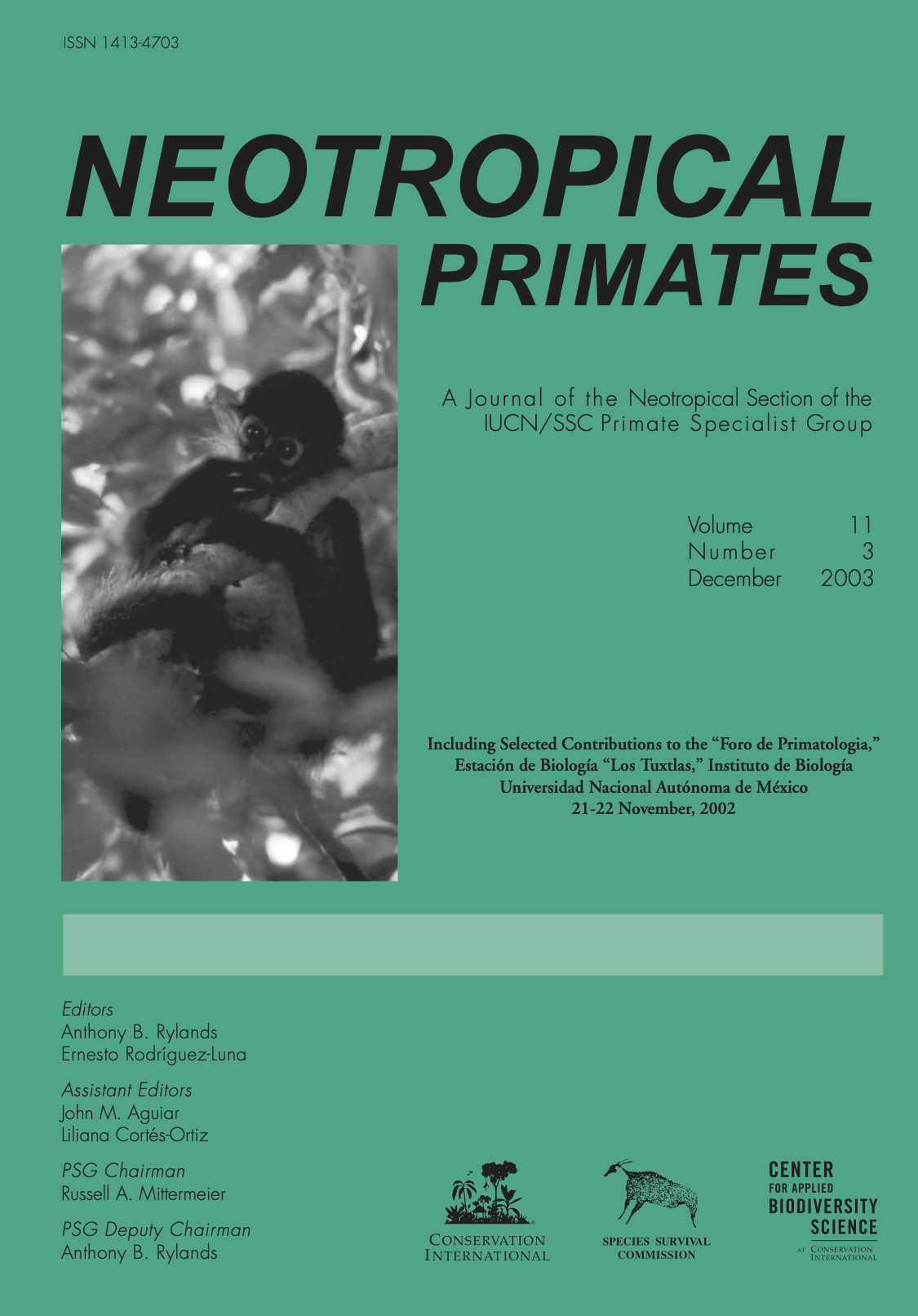Investigaciones con Alouatta y Ateles en México
DOI:
https://doi.org/10.62015/np.2003.v11.550Abstract
Here we present a summary of current research on wild primates in Mexico based on the results of the recent Primatology Forum held at Los Tuxtlas in November 2002. The forty-nine projects included population censuses as well as studies on feeding ecology, behavior, physiology, genetics and conservation. Forty-three percent of the studies concentrated on Alouatta palliata, followed by Ateles geoffroyi (35%) and Alouatta pigra (22%). Studies in the wild accounted for 59% of the projects, and those in captivity for the remaining 41% (50% A. palliata and 50% A. geoffroyi). Regarding studies in the wild, 83% are being conducted in fragmented habitats, and the remaining 17% are in extensive forests, highlighting the need for more research on the three species in large forest tracts. Studies in Los Tuxtlas accounted for 60% of the projects, while the rest come from various sites in the states of Chiapas, Campeche, and Tabasco and the Yucatán peninsula. There are no current studies of spider monkey populations in northeastern Mexico nor of howler and spider monkeys in the states of Guerrero and Oaxaca. Research on wild primates in Mexico, besides student training, is growing and diversifying in terms of study sites, focal species and topics. Such aspects are enriching our data banks on the natural history, ecology, behavior and conservation status of the three species of primates in Mexico.

Downloads
Published
Issue
Section
License

This work is licensed under a Creative Commons Attribution-NonCommercial-ShareAlike 4.0 International License.


